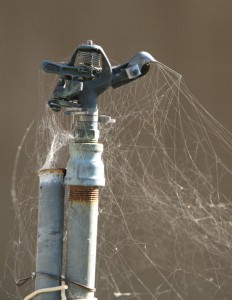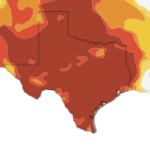Mayors Want Permanent H20 Restrictions

Photo by Justin Sullivan/Getty Images
Frequent lawn watering may soon become a thing of the past in the Dallas-Fort Worth area.
While the Dallas-Fort Worth Metroplex was the first major population center in Texas to become drought-free this winter, it looks like they’re preparing for more droughts like the one that has baked the state over the last year and half. This week a coalition of four mayors in the region (representing Arlington, Dallas, Fort Worth and Irving) announced their intention to enact permanent water restrictions in their cities by this summer. This would mean residents could only water their lawns twice a week.
“For us to grow in our future, we’ve got to have that water,” Dallas Mayor Mike Rawlings said at an announcement Wednesday, according to local news reports. “We don’t have enough water for those people. In less than 20 years, you talk about a deficit in Washington. We have a deficit right here in North Texas and it’s water,” he said.
Dallas, Fort Worth and Irving are some of the top users of water per capita in the state, making them prime subjects for conservation. But each city’s council still has to approve the permanent restrictions before they go into effect.
El Paso has had permanent water restrictions since 1991. And Austin may also be getting on the “dry is the new normal” bandwagon. The city is piloting a program that allocates a certain amount of water for lawn and landscape irrigation each month, as opposed to the current system of allocating certain days for it. Apartment complexes and commercial developments will be limited not by days of the week for watering, but by a finite limit of water. If the plan goes well, it may be expanded.
In Texas, agriculture uses more water than anything else, making up 56 percent of the state’s water demand. Municipal use, for cities like Dallas and Fort Worth, makes up 27 percent. But the balance will shift in the coming years. The state water plan predicts that by 2060, municipal demand will outgrow agricultural. And nearly a quarter of the new water supplies for Texas over that time are projected to come from conservation.
You can learn more about the drought at our new interactive webpage, Dried Out: Confronting the Texas Drought.

